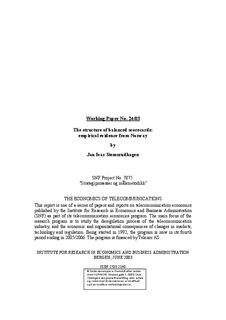| dc.description.abstract | This study explores the structures of performance measurement systems used in Norwegian manufacturing industry as a nominalistic phenomenon. The study builds on the premise that leaders enact their performance measurement systems through their use of information, and explores, based on balanced scorecard (BSC) theories, the leaders' use of information in 83 Norwegian manufacturing companies. The study shows that the nominalistic structures of performance measurement systems comprise many of the measures, financial as well as non-financial, found in BSCs, irrespective of whether or not the companies have in fact implemented this system. By undertaking a factor analysis, we identify four dimensions in the performance measurement systems’ nominalistic structure: the owner dimension, the customer dimension, the operations dimension, and the learning and growth dimension. A cluster analysis is undertaken to identify any strategic patterns that might reflect the companies’ strategic intentions. This indicates that the use of performance measurement systems and their inherent measures is primarily a question of management culture. | en |
